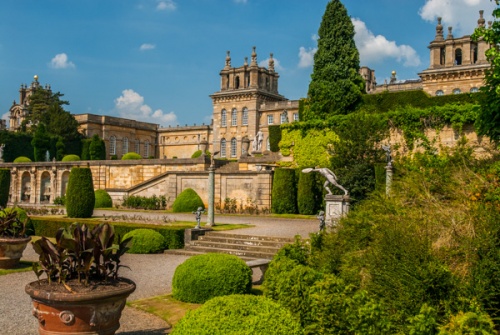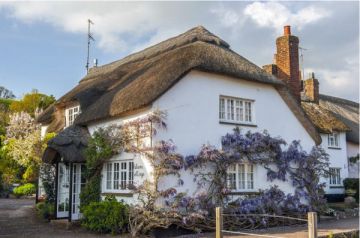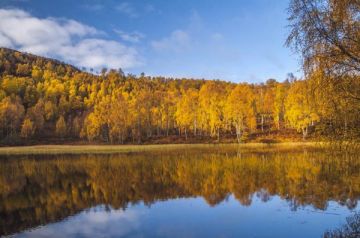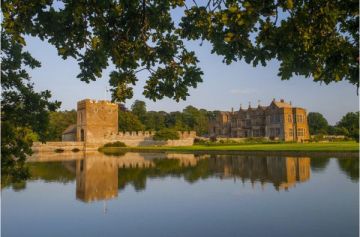
The county of Oxfordshire is flanked by two ranges of hills; the Cotswolds to the west and the Chilterns to the east. Between these hills lies a rolling plain through which wanders the Thames and its tributaries.
Most visitors come to Oxfordshire for the urban delights of Oxford and its colleges, or the grandeur of Blenheim Palace, but Oxfordshire has delightful countryside to offer as well, with amazingly pretty villages clustered on the banks of its rivers. Take the time to ramble along the Thames Path as it hugs the banks of the river that has been called "liquid history".
The Oxfordshire Cotswolds boast more lovely villages, with cottages constructed of the famous warm-toned Cotswold limestone. Burford, on the banks of the Windrush, is one of the prettiest, but it has competition for that distinction.

The chalk hills of the Chilterns have been designated an Area of Outstanding Natural Beauty; this is a region of beech woods and grassy hills, providing enjoyable walking opportunities. Through the hills run the Ridgeway Path, tracing the route taken by prehistoric travellers millennia ago.
To the west, the Ridgeway passes beside the hillfort of Uffington Castle and the enigmatic White Horse carved into the chalk of the hillside. The horse has recently been dated to about 1400 BCE, but even older is the nearby chambered tomb of Wayland's Smithy.
The city of Oxford is one of those English anomalies, a small town that has become a popular tourist destination, giving it a bustling feel in the crowded central core, and pockets of calm just a few feet away. Duck into a college "quad", or square, and the din of Oxford's streets suddenly disappears, to be replaced by a sense of timeless calm.

The history of Oxford is twined around the growth of Oxford University, though Oxford citizens had what could charitably be described as a love/hate relationship (little of the former and a heaping helping of the latter) with the students who have flocked to the Oxford University colleges since at least the 12th century.
The colleges of Oxford University are studies in contrast, ranging from the early medieval grandeur of Brasenose to the Tudor Christ Church, and the more modern lines of Keble College.
Although most visitors come to Oxford because of the architecture and history of the University, it would be a mistake to overlook the rest of Oxford's diverse attractions. From world-famous museums like the Ashmolean to simple pleasures like poling a punt along the sleepy Cherwell, Oxford repays a visit many times over.
Just a few miles north of the city is the extraordinary Blenheim Palace. The palace was a gift from the grateful Queen Anne to John Churchill, 1st Duke of Marlborough, for his victory over the French at the Battle of Blenheim in 1704. Designed by Sir John Vanbrugh, and completed by Nicholas Hawksmoor, the house sits in extensive parkland landscaped by Capability Brown. Statesman Winston Churchill was born in a small room just off the entry, and there are displays relating to Churchill's life and career.











